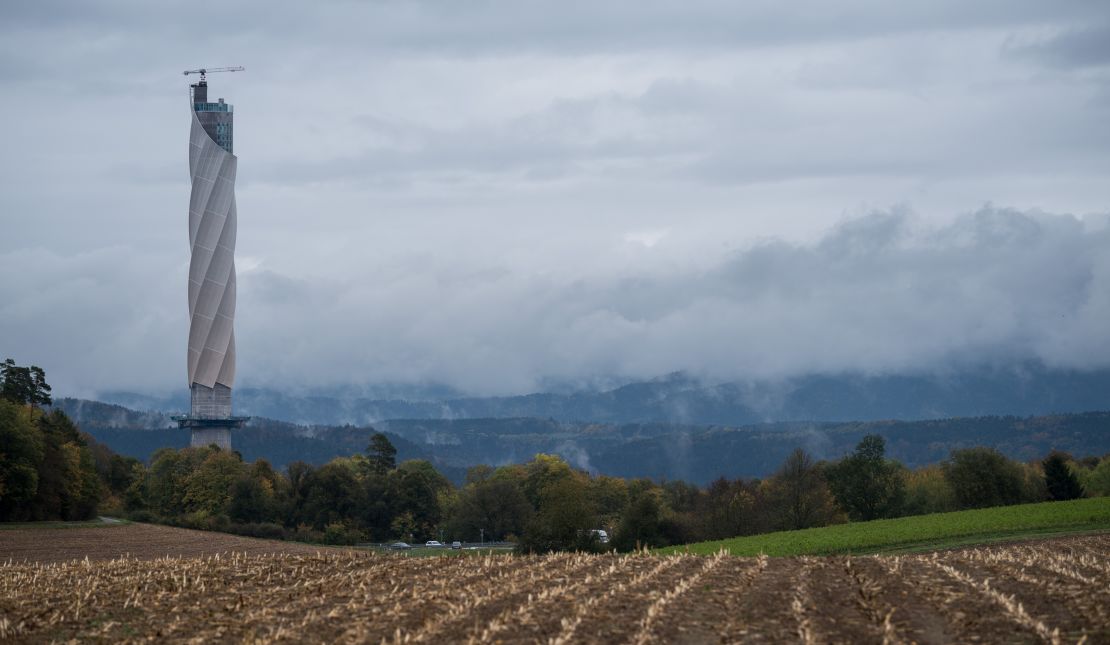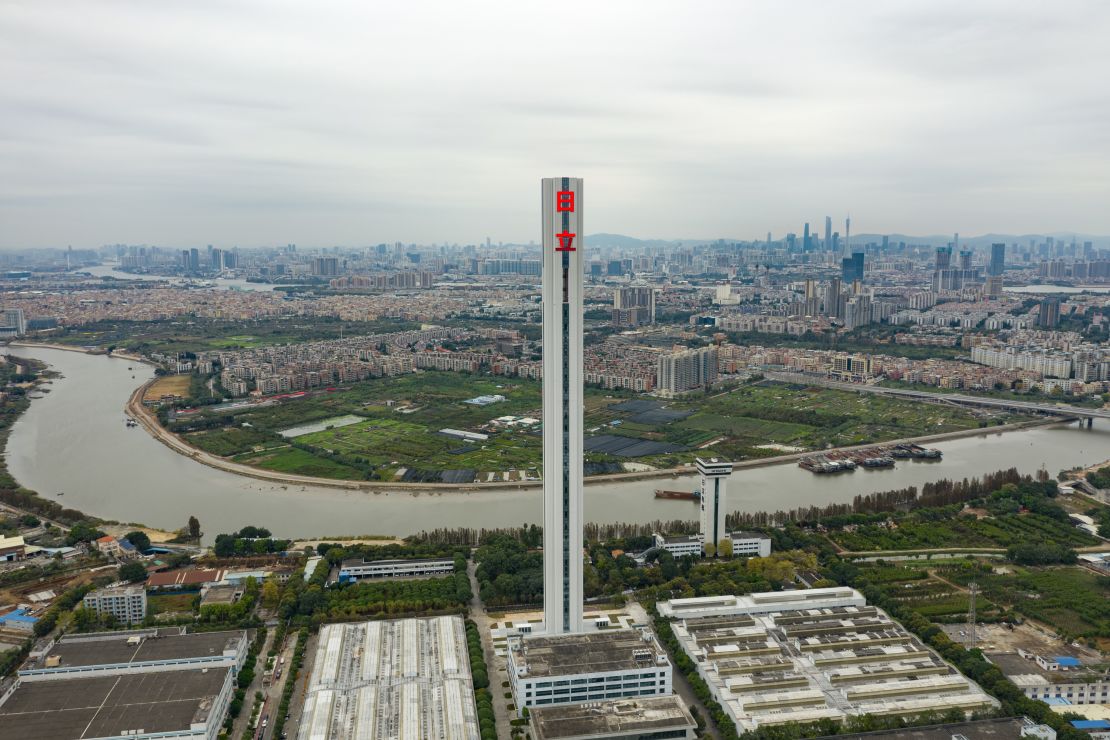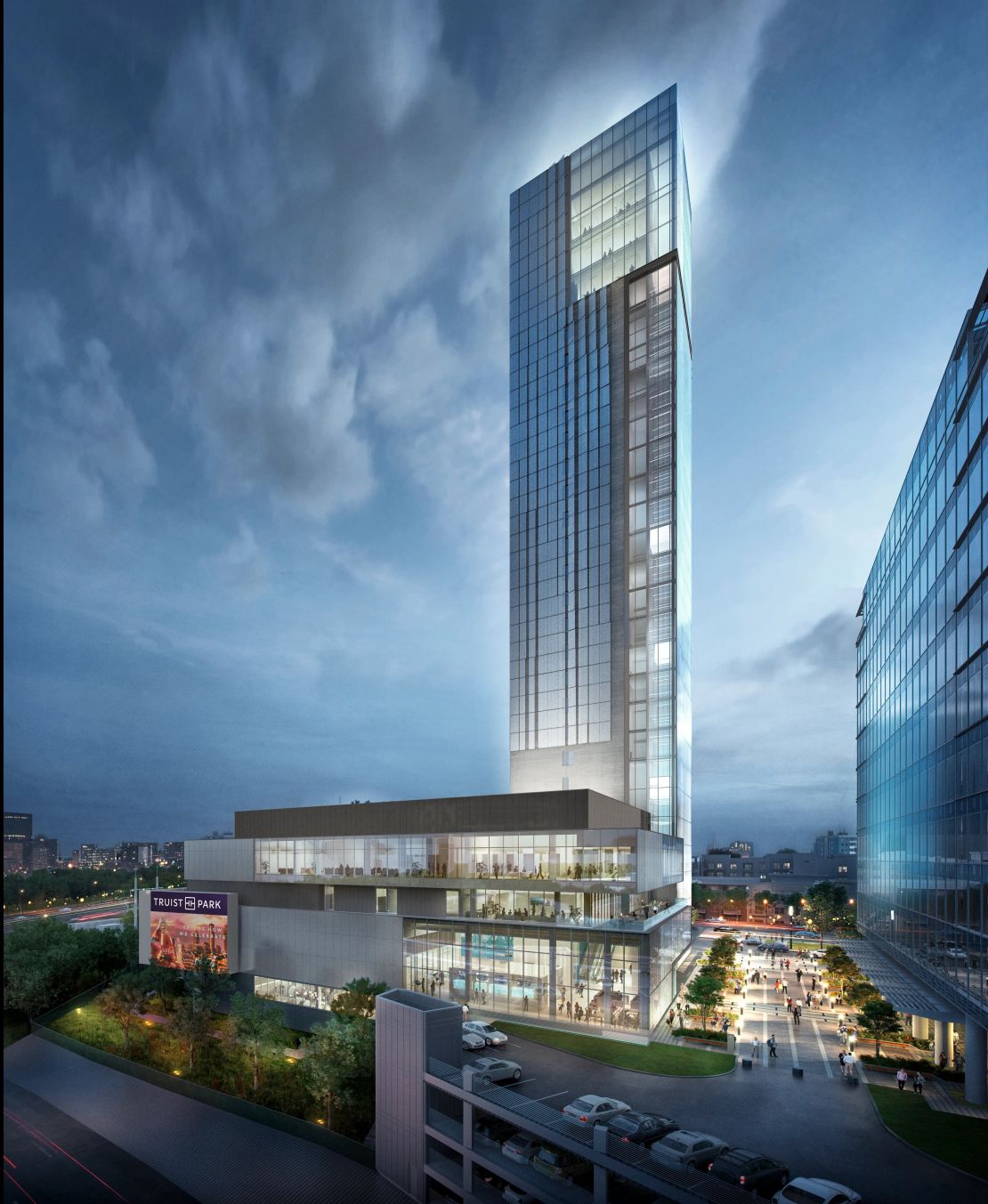CNN
—
At the eastern edge of Germany’s Black Forest, just outside the medieval town of Rottweil, a peculiar structure — a skyscraper where nobody lives — dominates the land.
It’s called TK Elevator Testturm, and at a height of 807 feet, it’s among the country’s tallest buildings.
However, as the conspicuous absence of windows reveals, this high-rise isn’t filled with empty offices or luxury condos. The tower’s main purpose is hidden in its core: 12 shafts used to test the latest elevator models.

German manufacturer TK Elevator, which has supplied elevators for skyscrapers including New York City’s One World Trade Center, also has test towers in Atlanta — a 420-foot structure located in the Battery, home of the Atlanta Braves baseball team — and Zhongshan, China. At 813 feet, the latter is almost three times taller than the Statue of Liberty.
Elevator test towers can go higher still. For instance, the H1 Tower, built by Japanese conglomerate Hitachi in Guangzhou, China, tops out at 948 feet. It’s one of the tallest buildings in the skyscraper-dense city, and is so big that it would be among the 25 tallest buildings in New York City — and the third tallest in LA.
Elevator test towers are “a bit like a test track for a Formula One team,” said Tomio Pihkala, chief technology officer at Finnish elevator manufacturer Kone, in a phone interview. “The primary and most important reason why test towers exist is that the verification of certain safety functionalities can be only done in a real environment.”

Recreating operating conditions
Kone, which has installed elevators in Taipei 101 (the world’s tallest building from 2004 to 2010) and London’s The Shard, opened its first test tower in Hyvinkää, Finland, in 1967. The company has since built four more test towers, with the tallest, completed in 2015 in Kunshan, China, topping out at 773 feet.
“In test towers we are augmenting the real operating conditions of the elevator, minus the presence of normal users,” Pihkala said. “It’s also an excellent location to verify the quality, comfort and reliability of an elevator.”
Among the safety tests is one that simulates a freefall: “It’s not a real elevator, but an equivalent mass… and that’s when the emergency brake system and the safety gear have to activate to stop the elevator safely, so no one inside gets hurt,” Pihkala said.
The reason why some test towers are so tall is that most modern elevators are so fast that they quickly run out of space, Pihkala added. “When you have a faster elevator, you need a taller test tower,” he explained. “High-speed elevators travel at more than 30 feet per second, and in order to test that kind of elevator, you need enough space to accelerate to the maximum speed, and then decelerate.”
Building upward is not the only option, however. In fact, the world’s longest elevator testing facility is underground. Located in Tytyri, Finland, it’s part of a working limestone mine and reaches a depth of almost 1,150 feet.

“This is unique in our industry,” Pihkala said of the facility. “We came to an agreement to use some open shafts in a mine, which allows us to test elevators fit for buildings up to one kilometer in height.”
At the site, elevators can be tested at speeds of up to 62 feet per second, and freefall tests see a 22,000-pound elevator frame reach 85 feet per second. In total, the mine has 11 shafts with a combined length of almost a mile.
Like all skyscrapers, elevator towers need to withstand strong winds that can cause swaying and affect test conditions. For this reason, some of them are fitted with mass dampers — essentially massive pendulums that counteract the vibrations caused by severe weather, or even earthquakes. About a third of the world’s 20 tallest buildings contain one.
However, for engineers looking to test elevator technology in extreme conditions, these mass dampers can also be used in exactly the opposite way: to create vibrations rather than absorb them. The TK Elevator Testturm in Rottweil has a 200-ton tuned mass damper, suspended from four steel cables, which can be set in motion by two motors. The resulting oscillation simulates wind and earthquakes, which are among the biggest challenges in elevator development, according to TK Elevator.

Tourist attraction
Elsewhere, the Rottweil tower’s design features a fiberglass fabric exterior that gives it a sleek, opaque appearance. As well as protecting the building from solar radiation and combating wind, the facade has helped make the building a local architectural landmark, according to TK Elevator.
The tower has become a tourist attraction since it opened in 2017, and even hosts an annual competitive “stair run,” which attracts over 1,000 participants. Most visitors, however, come for the observation deck, Germany’s tallest, which offers uninterrupted views of the Black Forest.
It is reached via a suitably fast elevator ride.
“In 30 seconds, visitors are taken to a height of 761 feet,” Beate Höhnle, the tower manager, told CNN in an email interview. “The ride has a speed of 26 feet per second and, on a clear day, visitors are able to see the Swiss Alps.
“No matter what time of the year,” he added, “the tower and the view always offer something special.”



